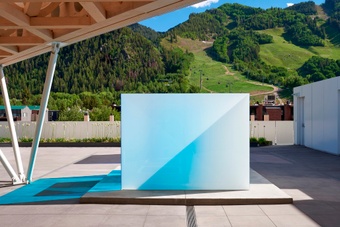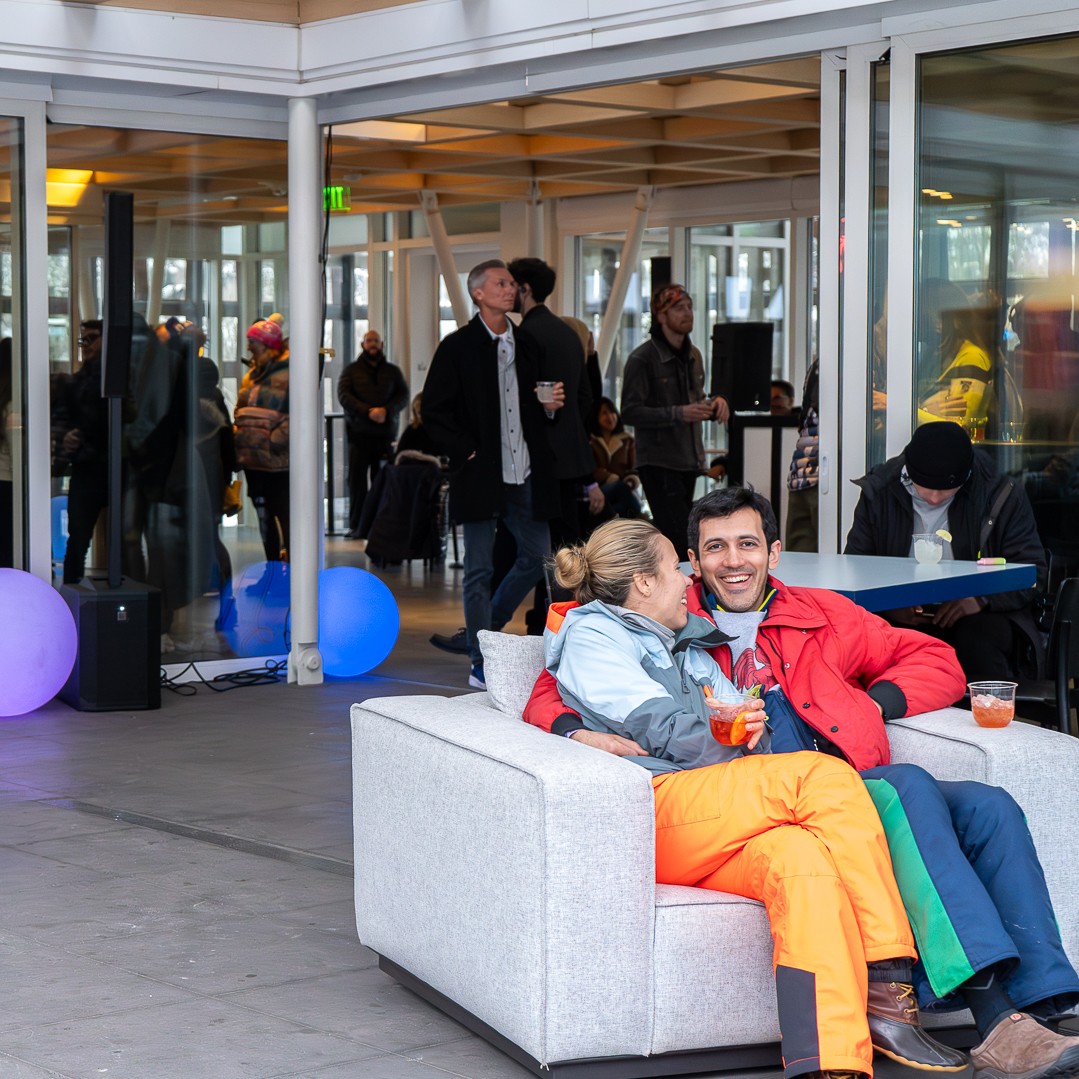Aspen Art Museum
- Join us on May 15 for engaging presentations by our esteemed 2024 Artist Fellowship recipients!
- Categories
- All events
- Talks and Lectures
- Member Events

- For more information on how you can join the AAM, please visit the Street Level Visitor Information Desk, inquire in the Shop, or call 970.925.8050.

- The Rooftop Café is committed to sharing real farm-to-fork experiences with the Roaring Fork Valley. Visit us today!

- Aspen Art Museum is an artist-founded institution dedicated to supporting artists in the development of bold ideas to shape our museum and the field of art today.
The Store is a total reimagining of the Aspen Art Museum’s shop by American artist Jonathan Berger. At once an exhibition, meeting point, archive, and place of commerce, it includes more than 350 objects combining found, made, old, new, one-of-a-kind, mass-produced, raw and ephemeral materials—that which is widely acknowledged as art or design and that which is not. Some objects are not for sale, and others are priced from free to $50,000.
The Store is inspired primarily by the artist’s own first-hand experiences working and shopping in downtown New York in the 1990s. Berger pays tribute to spaces that might share characteristics with artistic projects, yet are not defined by an art historically recognized lineage of artist-led stores, including those of Claes Oldenburg (1961) and Tracey Emin and Sarah Lucas (1993); longer-running projects such as Sara Penn’s Knobkerry (1965–2006) where David Hammons bought African art and staged an installation in 1995; Hans-Peter Feldmann’s Laden (1975–2015), which ran for forty years in Düsseldorf; and Keith Haring’s Pop Shop (1986–2005). Through his wide range of collaborations with contributors, Berger’s project also critically engages with the “Wunderkammer” tradition, which emerged in the seventeenth century and became a precursor to the modern museum.
Berger’s personal selection of new, antique, and dead stock items from varying makers, regions, and time periods brings together jewelry, textiles, toys, furniture, ephemera, fragrances, ceramics, glassware, and household objects, as well as folk art and contemporary art. He has also facilitated a series of specially produced projects and exclusive products, which further The Store’s mission as a generative creative venture. Trygve Harris, founder of the fragrance company Enfleurage, has for the first time created her own collection culled from the vast library of Enfleurage’s essential oils, the artist Julie Tolentino has designed a counter which exists simultaneously as a monolithic sculpture, and Ramdasha (formerly Ramdasha Bikceem) has produced the first in a series of soundtracks for the space. As the first project in an ongoing partnership with Glenwood Springs Mountain Valley Weavers, fashion label BODE has produced a series of garments featuring their handloomed textiles.
The Store’s distinctly democratic philosophy and approach extends into Berger’s conception and design of the shop floor. Items are displayed in various scenarios, including within turn-of-the-century metal and glass cases lit contrastingly by contemporary plastic lampshades, on dead stock 1960s modular shelving produced by the Tomado company in Holland, as well as hanging from the ceiling, arranged on the floor, and tacked to sections of cork wall. Through conflating radically different modes of display across time, context, and function, Berger creates an environment where objects are able to coexist as we know them while also forming new primary identities based on bringing different characteristics to the fore, including color, form, material, and historical and cultural significance. When considered as an installation, Berger’s vignettes or arrangements of these objects also allow them to form unlikely relationships with one another, further complicating and expanding our understanding and appreciation of what they are. These and other exhibition design strategies aim to flatten aesthetic hierarchies, using the museum context to question how display contributes to our attribution of value. Simultaneously, the project questions attitudes towards so-called “low-level” commerce, in opposition to boutique or “luxury” experiences.
At any one time, one of the display cases will be dedicated to the history of a particular store that has inspired Berger, creating an archival exhibition within the larger project, which furthers broader ways of thinking about the creative potential and cultural impact of the store format. Among these archival exhibitions is the history of legendary New York store Little Rickie (1984–2019) and its owner Phillip Retzky, who personally employed the artist in the late 1990s, and Ting’s Gift Shop, founded in 1958 by Tam Ting, which continues to operate to this day in its original location in New York City’s Chinatown.
The first of these archival exhibitions chronicles the history of legendary dead stock clothier Rue St. Denis, opened in 1990 by Jean-Paul Buthier and Riccardo Bonechi on Manhattan’s Upper West Side, later relocating to the East Village where it operated until closing in 2018. Rue St. Denis became highly influential for reinventing widely held conceptions of vintage as simply period costume. They pioneered new forms of style through conflating seemingly disparate and often overlooked designers, aesthetics, and moments in postwar industrially produced fashion. Buthier’s visionary, idiosyncratic approach as a garment buyer filtered through the experience created by Bonechi as the art director and public-facing proprietor of the brick and mortar store yielded a retail institution which remains unprecedented. An extensive conversation between Buthier and Jonathan Berger will accompany selections from the Rue St. Denis archive, as well as a shoppable selection of items from their inventory offered for sale at The Store’s AAM brick and mortar, and on The Store e-commerce site.
THE STORE
Jonathan Berger in collaboration with
Eric Angus, Anonymous, Syed majid Ali, BODE, Carbondale Clay Studio, James Castle, Comme des Garçons, Cara Croninger, Damien Davis, Vaginal Davis, Dirt Floor Studios, The Eames Office, Etienne Feijns, Glenwood Springs Mountain Valley Weavers, Green River Project, Alisa Grifo, Lee Hale, Trygve Harris/Enfleurage, Hornvarefabrikken, Hustle Forward, Peter Ivy, Reina Katzenberger, Sister Corita Kent, KIOSK, Kite House Magoji, Katrina Lapenne, Leekan Designs, Little Rickie, Mamo, Yuki Matsuo, Ross Menuez/Salvor, Modern West Florals Co, Ted Muehling, Isamu Noguchi, Mr.Okumura, Meri Rachna, Ramdasha, Phillip Retzsky, Marco Romeny, Betty Roytburd, Paula Rubenstein, Rue St. Denis, Sabbathday Lake Shakers, Dean Sameshima, Peter Schumann, Biba Schutz, Pierfrancesco Solimene, Michael Stipe, Trae Story, Ting’s Giftshop, Julie Tolentino, Walter Van Beirendonck, Various Projects, Ko Verzuu, Jonathan Williams, and Yamabikoya.
Mythology, Craft Caravan, Mandrake, Shack, CRYSTALS, Leekan Designs, Dullsville, Metal and Thread, and Mie Cin—stores that once or continue to operate in New York City over the past 50 plus years—have also informed the development of Berger’s project. Despite their different wares and clientele, these stores shared deeply personal expressions of self on the part of their proprietors, as well as unique specialization of endeavor.
Related Exhibition Materials
free courtesy
Amy & John Phelan
- Aspen Art Museum
- 637 East Hyman Avenue
- Aspen, Colorado 81611
- t: 970.925.8050
- f: 970.925.8054
- info@aspenartmuseum.org
| Hours |
|
Tuesday–Sunday, 10 AM–6 PM
Closed Mondays
|
© 2024 Aspen Art Museum
General operating support is provided by Colorado Creative Industries. CCI and its activities are made possible through an annual appropriation from the Colorado General Assembly and federal funds from the National Endowment for the Arts.



General operating support is provided by Colorado Creative Industries. CCI and its activities are made possible through an annual appropriation from the Colorado General Assembly and federal funds from the National Endowment for the Arts.




















